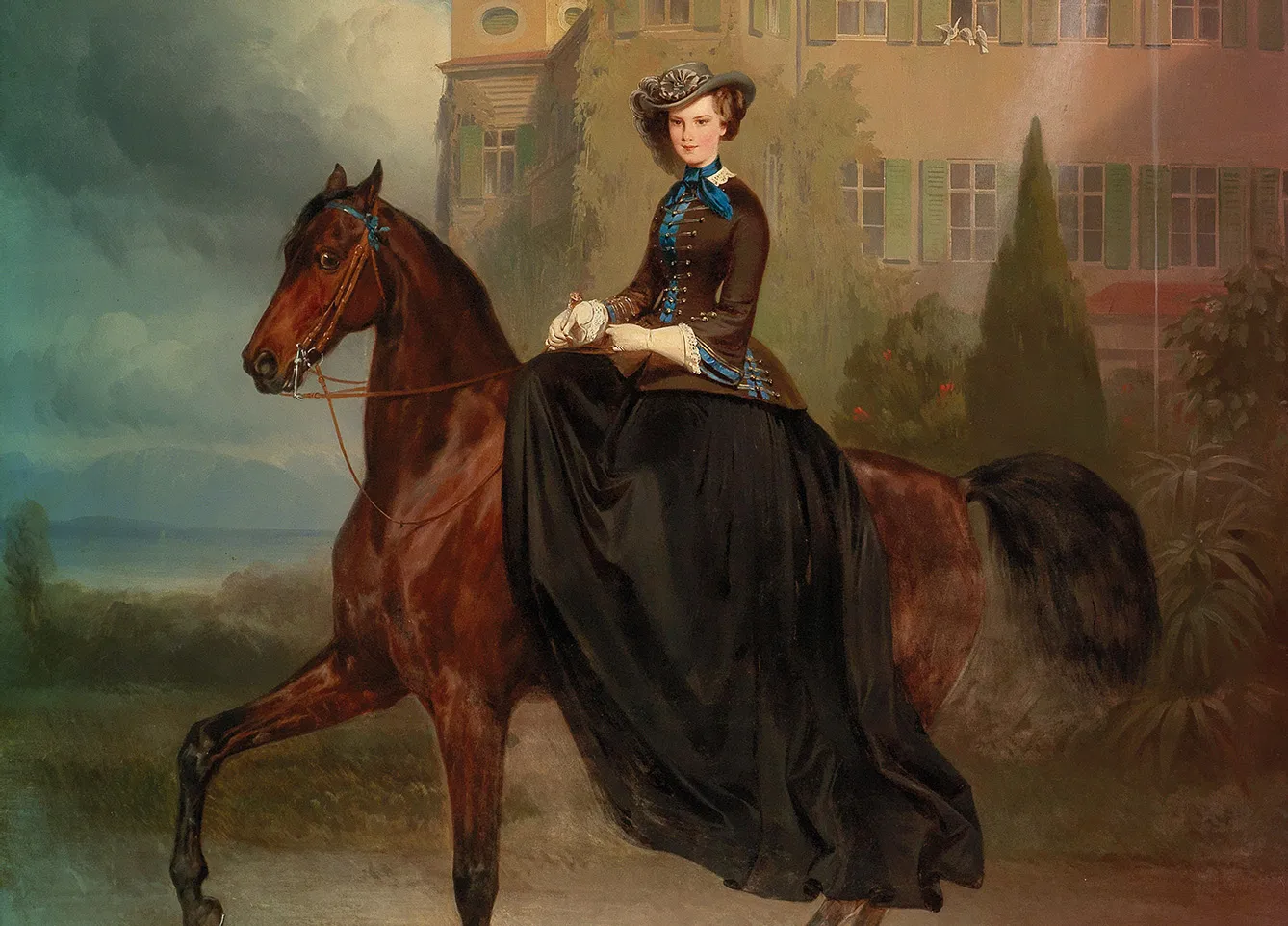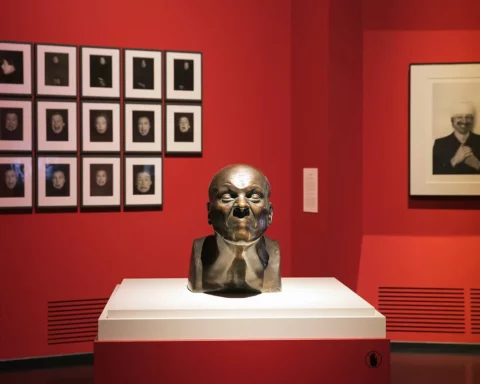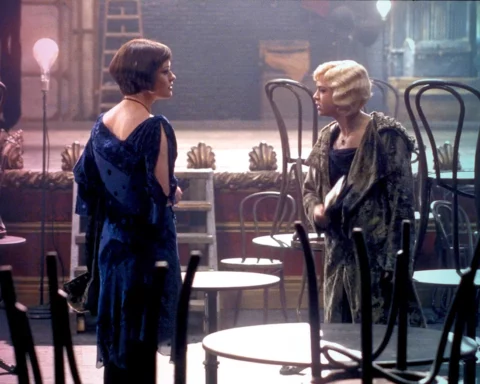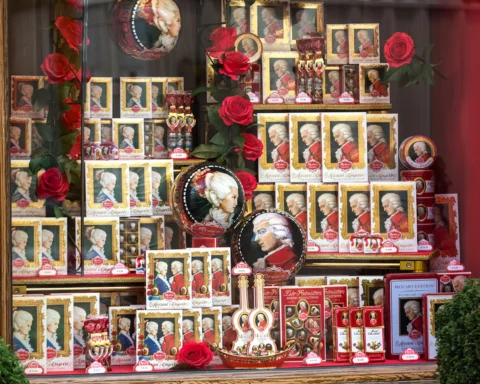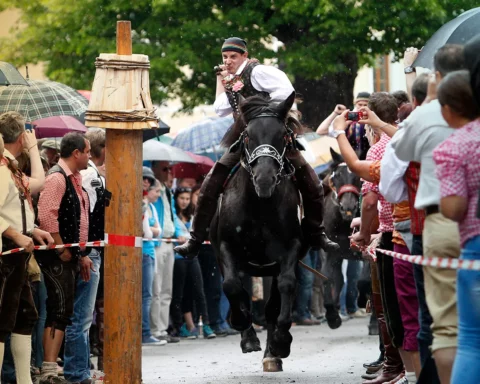As many capitals compete for the title of the “Paris of Central Europe,” Austria’s Vienna is at least one step closer than any other, having its own version of Marie Antoinette in Empress Elisabeth, nicknamed “Sisi,” the wife of Emperor Franz Joseph I. They both have in common estranged marriage, a life of tragedy and scandal, and a tragic demise.
While the French queen advising her subjects in want of bread to eat cake has been immortalized many times, including in Sofia Coppola’s 2006 drama, Sisi’s biopic “Corsage” is still on its tournée around world movie festivals. Awarded Best Film in London, Marie Kreutzer’s movie starring Vicky Krieps has already received acclaim from juries at the European Film Awards, Cannes, and the Chicago International Film Festival.
Set in 1877, the movie follows fictional events from the real life of the Empress, who, at the start of the film, has just turned forty and is struggling to maintain her image in the eyes of the public. It follows her, spreading the word about Sisi around the world long after Vienna started celebrating her persona.
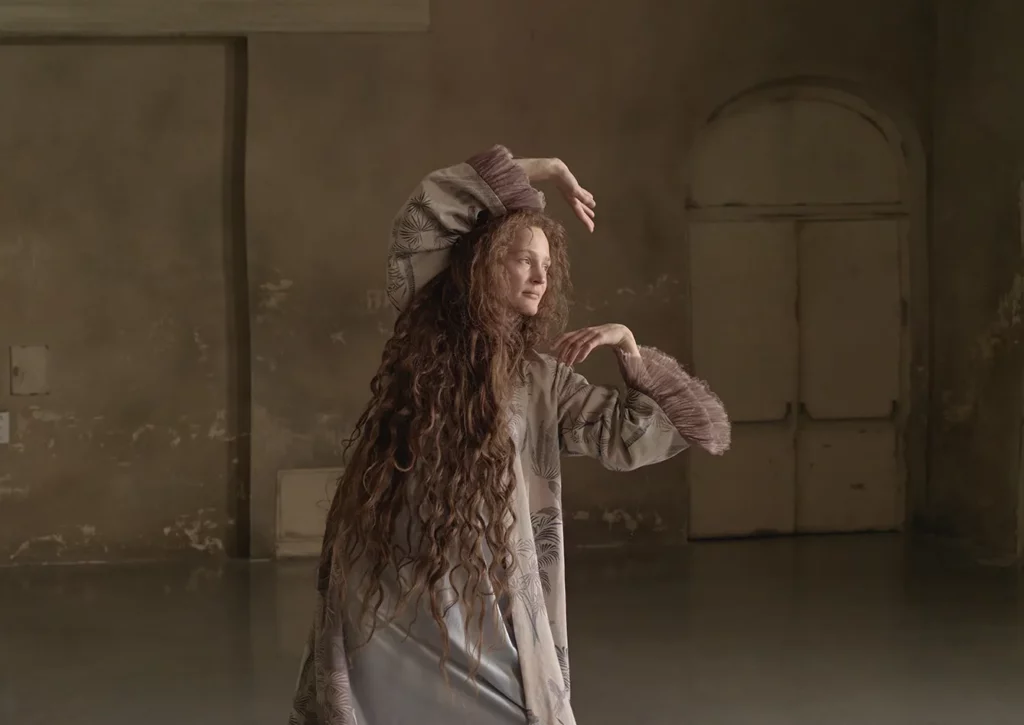
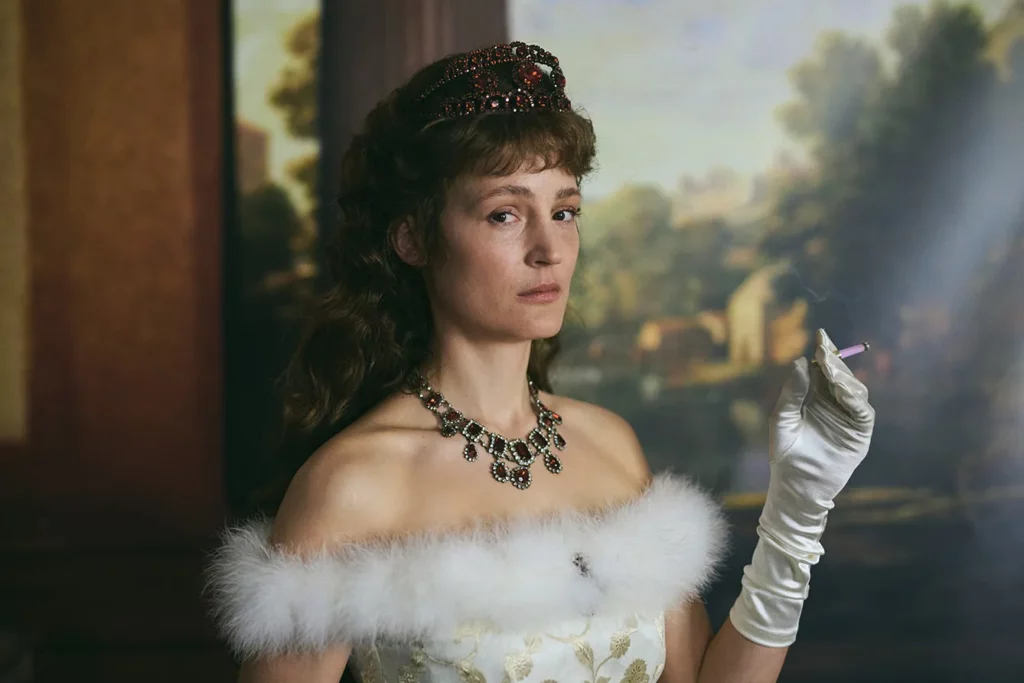
Hot empress of frigid court
She was seventeen when she became Empress, wife to the penultimate ruler of the Austro-Hungarian Empire, Franz Joseph I, who reigned longer even than British Queen Victoria. The whole second half of the 19th century was, for the Empire, a time of rising nationalism – ethnic separatism, national aspirations to form new political entities, and strong resentment toward class stratification that followed the ethnic and language differences. To that, the newly formed Germany was gaining power in Europe, competing with Austria as a local card dealer.
The Empress was at the center of those tensions (and note that she was of Bavarian, so of German origin), adding to her personal complications. The Habsburg Court was uncomfortably strict, protocol-oriented, and patriarchal (hence the aptly fitting corset symbol).
Before the age of twenty, Sisi was already a mother of two (gasp!) girls and was not even allowed to breastfeed them in their infancy. This and other courtly limitations starkly contrasted her somewhat liberal upbringing in the Wittelsbach’s Court. But then, one of her daughters died of pneumonia, and Sisi succumbed to depression, gradually becoming estranged from the other.
In 1858, aged 21, her position strengthened somewhat when she gave birth to Crown Prince Rudolf, her third child, and only son. Thirty years later, she’ll be heartbroken to learn that Rudolf famously died in his Mayerling Palace in a possible murder-suicide with his mistress.
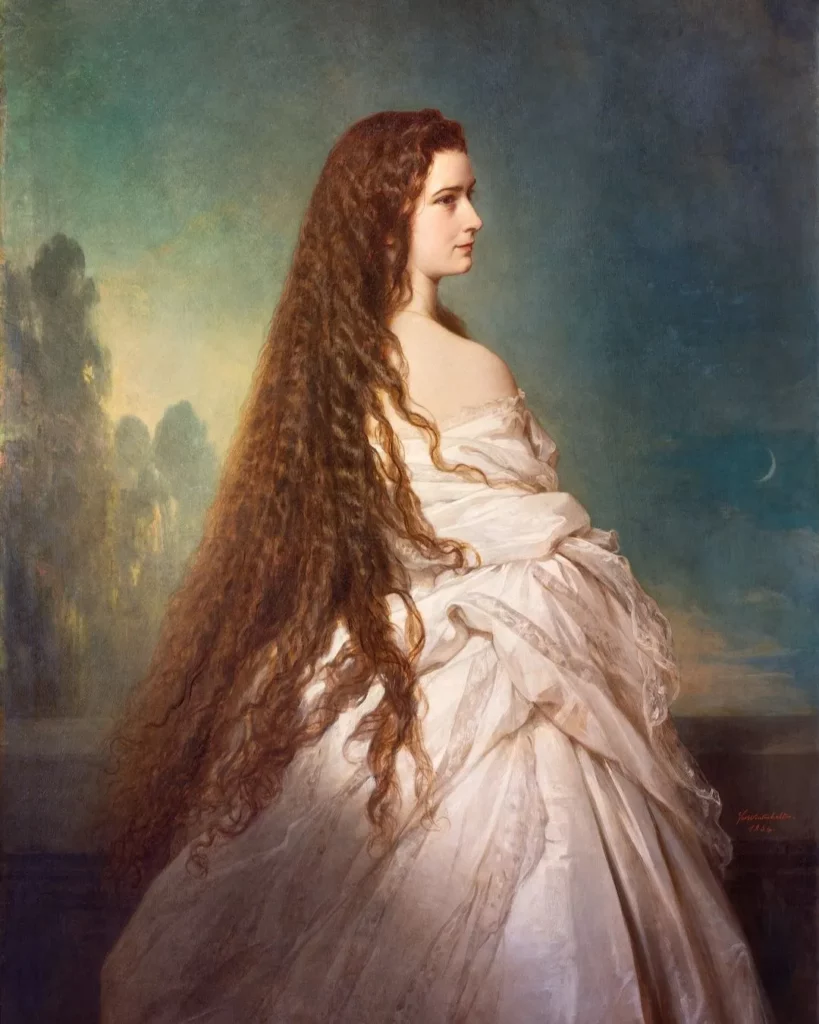
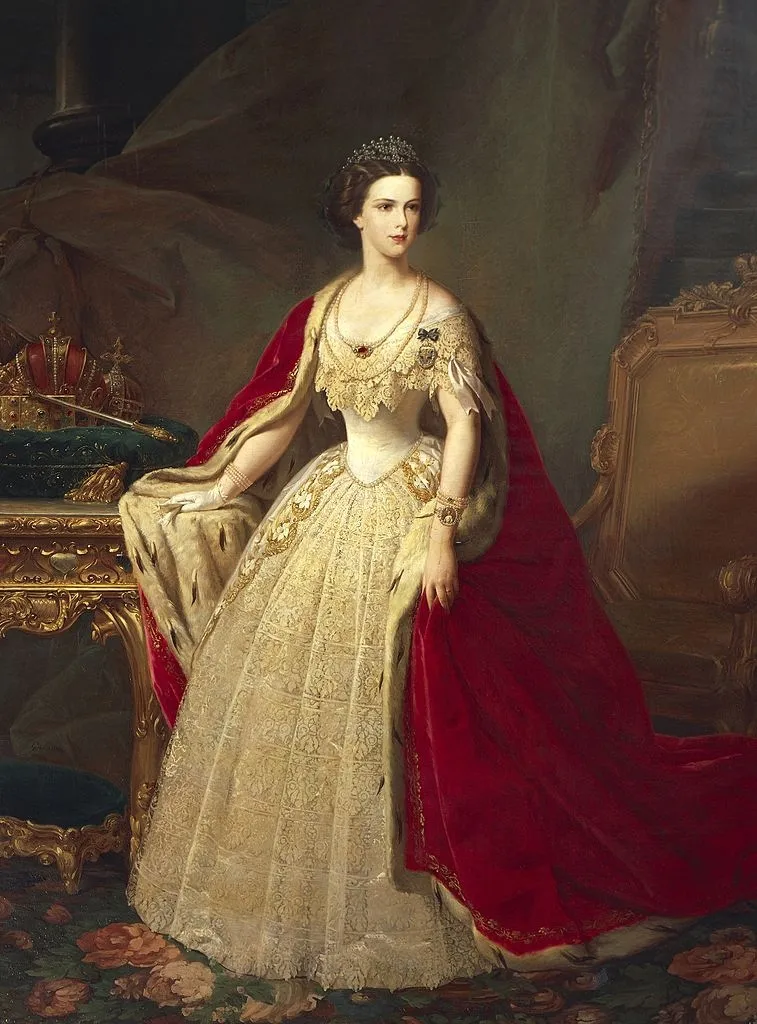
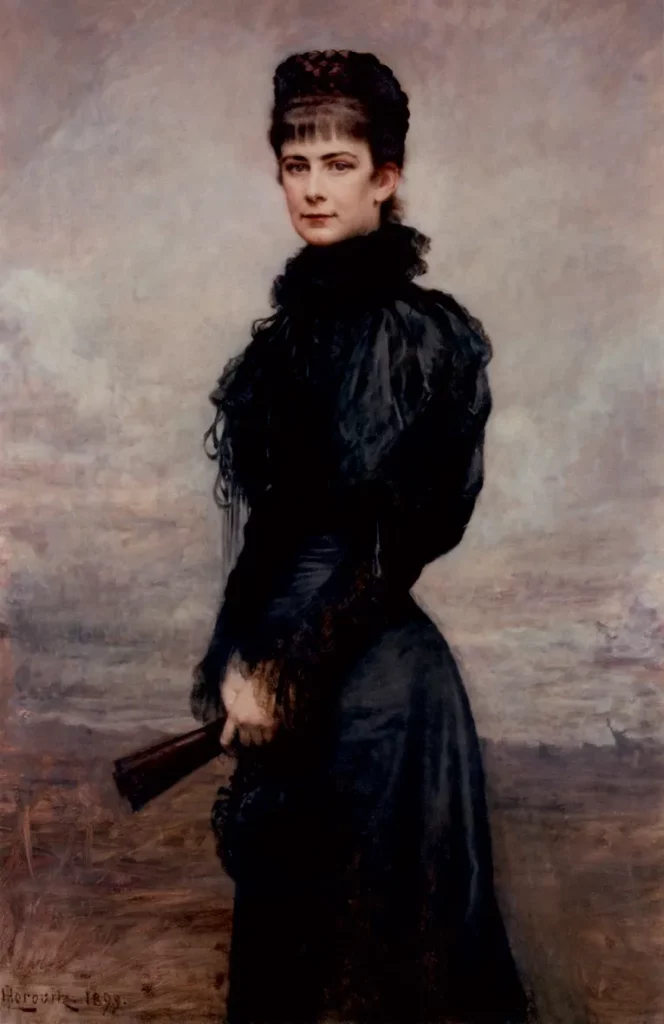
Austrian-Hungarian Sisi
In this still early period of her life – and still to some disappointment of her mother-in-law, Elizabeth fell in love with Hungary, the center of the “other half” of the Austro-Hungarian Empire, where people seemed less formal and more alive to her. In 1867 she would become the first Empress of the newly formed state. After her coronation, she lived in her Hungarian castle of Gödöllő. She gave birth to her fourth child, Princess Marie Valerie, and managed to raise her in her way this time.
Still, her duties were in Vienna, and Sisi was uncomfortable with them. After three pregnancies and some political failures of her husband, their marriage became a bit frigid. Sisi’s recurring depression, combined with a general sense of derealization, made her introduce strict corporeal regimens. She would refuse to eat for days and began tightly lacing her corsets, cinching her waist to a tiny 40 centimeters.
Drifting into orthorexia, she’d command every one of her residences to be fitted with a gym where she could practice her exercise regimen. In addition, her mental state worsened after Rudolf’s death in 1889 when she was 52. She would wear only black for the rest of her life. After a few other significant losses, including her mother, sister, and friend, she stayed melancholic, traveling around Europe, restless and looking for an escape.
A misdirected blow
As a conclusion of her miserable life, she fell victim to an attempt at her life for political reasons. In Geneva, a young Italian anarchist Luigi Lucheni stabbed her in the chest with a makeshift knife from a needle pile. The blow wasn’t even really meant for her – the direct action, perhaps intended as a spark to revolution, was supposed to be a strike at the Duke of Orléans, who had left Geneva earlier than expected, forcing the assassin to choose a new victim.
Sisi is celebrated in Vienna with her own museum, themed sightseeing tours, and numerous spots named after her, her funeral procession was grandiose, and an oeuvre of art and literature dedicated to her is vast. Her name, Elizabeth, was the name of a Hungarian saint, which led to more unusual commemorations – such as Saint Elizabeth Church in Lviv and the Austrian order of Saint Elizabeth.
But – and that’s a telling fact – one of the most famous symbols of her life is Mayerling Palace, where her 31-year-old son took his life, turning her lifelong melancholia into even deeper depression. With the movie “Corsage,” the corset is about to become an equally known symbol of her life. But there’s much more to her than all those symbols.


